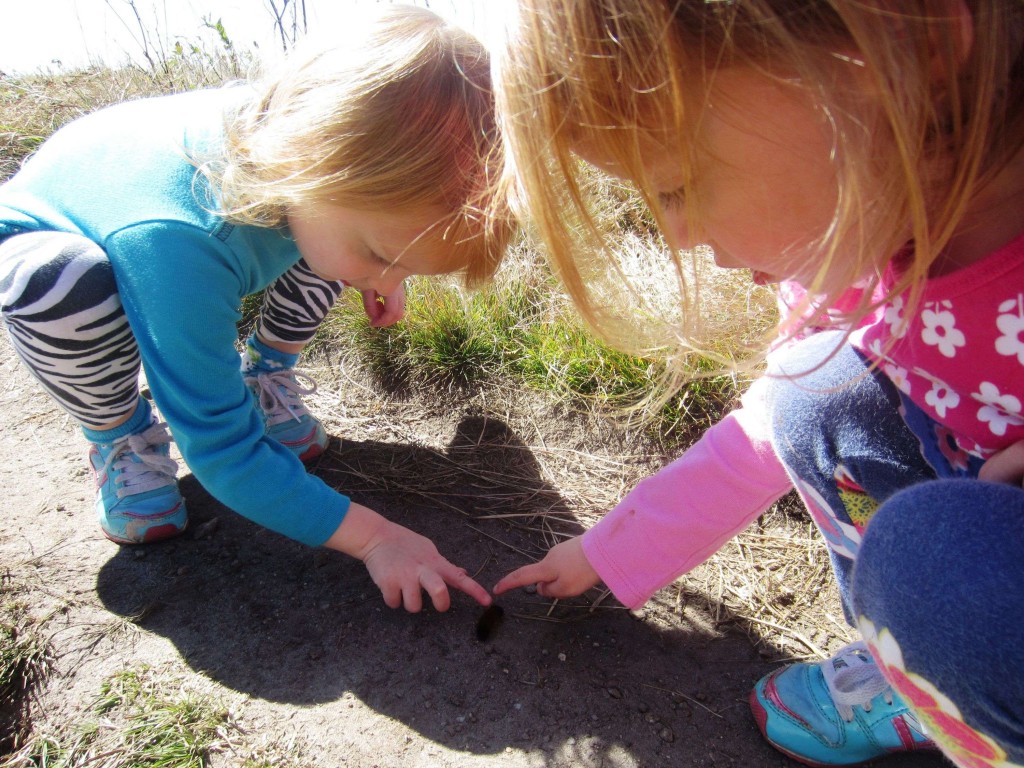
We have all been there. When our sweet, loving kiddo loses the plot and becomes a whirlwind of anger. A volcano of upset that is erupting unpleasantries all over us. A firestorm of challenging behavior, elevated energy and bold defiance. And it can happen without warning, throwing us off our game.
These are the moments that define us as a parent. As Kim John Payne says, “How we handle the storms and struggles is what ultimately define us in the eyes of our kids.”
And what if these challenging behaviors are not defiance but rather disorientation? Kim John Payne in his new book, “Being at Your Best When Your Kids Are at Their Worst: Practical Compassion in Parenting,” says that, “when kids are naughty, and they look right at you, it is often because they are looking to orient themselves.”
When our kids are angry and upset they are vulnerable and lost. And during this time of vulnerability and disorientation they use echolocation to get their emotional bearings. Like navigators at sea who send out a sound, a ping, and then listen for the echo to determine what their surroundings are like. Our kids do the same in an attempt to get their emotional bearings. Their “ping,” their sound, is their behavior in that moment. The anger, the frustration, the hurt. The yelling, the kicking, the hurtful words. These behaviors are sending out an echolocation to us.
When our children are lost, they don’t have many ways to orient themselves. Their primary way is through behavior. All behavior is communication and our kids are communicating with us in a really challenging way. They are attempting to get their emotional bearings through echolocation.
They achieve this by echo-locating us, trying it out on us. They send out behavior and the response they get from us will either help them get their bearings, or further disorient them.
Kids will “ping” us when they are angry and upset. When their big emotions become overwhelming and they are unable to make sense of them. They will “ping” us during times of life transitions, like moving to a new house, changing schools, parental divorce, changing friend groups, etc.
They will “ping” us when they are in pain and during developmental shifts. Obvious developmental shifts occur with the emergence of the adolescent brain and the 2’s. Developmental shifts also occur at 6.5 and 9 years of age.
If we can understand that we are being pinged – if in that moment, we can recognize that they are lost and trying to find themselves. It allows us to respond in such a way that our kids locate their emotional selves and we approach a defining parental moment with grace, compassion and love.
As our kids use echolocation via challenging behaviors, what can we do so that the response we provide helps them find their bearings rather than disorienting them more? Below are 5 things you can do as a parent when your kiddo “pings” you to support them in finding their emotional bearings.
1. Recognize They are Vulnerable:
When they ping us and we can remove ourselves from the “drama” and recognize that they are vulnerable, it allows us to approach the situation with empathy. It prevents us from engaging and inflaming the behavior. Our body language becomes soft. Our voice stays calm and neutral. Which comforts the child. When we recognize they are vulnerable we understand the situation is much worse for them. That it is hard to be them and we need to respond with calmness and love.
2. Be Inquisitive not Accusative:
Approach the behavior from a place of curiosity. Ask the questions, “I wonder why they are lost? I wonder what is going on for them?” By being inquisitive, it prevents us from taking our kids behavior personally. Which allows us to remain emotionally neutral and centered. The quickest way to being centered during our kids challenging behavior is to wonder. When we wonder, our body language naturally follows. Our eyes soften. Our shoulders round which is a non-threatening gesture. Our body language, which kids astutely read, is one of empathy and understanding.
3. Release the Need to Have the Answer
Do not burden yourself or the moment with needing an answer. The simple act of being curious is enough. If we pressure ourselves for an answer this can change the energy of the moment. We can begin to ruminate on the “why” and drift from sending back signals of stability. If an answer comes to you – fantastic. They may be obvious like too long of a play-date, blood sugar is low, sleep deprivation, friend group drama, etc. But if one doesn’t come to you it doesn’t matter because you have changed the emotional direction. This is more about the process than the answer. The shift is in the doing not the knowing.
4. Move from the Dance Floor to the Balcony:
We are on the dance floor with our kids throughout the day. When we are cooking meals, driving them to school, helping with homework, playing at the park, laughing over board games, reading book with them and tucking them in at night. These all happen on the dance floor. Spurred by curiosity we also need to find time to move to the balcony. Where we can be an observer. Where we can step away from what is right in front of us and take a big picture approach.
This is especially important when our kids are having a challenging time. When their behavior is trying, and we are exhausted. If we can move from the dance floor to the balcony it will allow us to view both our child’s inner world and ours. What is going on for us when our child is losing it? What information does the objective perspective provide us?
5. Become Aware of Your Early Warning Signs:
If these times of struggle and storms define us in the eyes of our kids, then we need to have awareness around our early warning signs of ‘losing it’. If we respond to our kid’s echolocation with anger, shame, or frustration they will stay disoriented.
Our bodies tell us ahead of our emotions and speech. Become aware of these physical responses that act as early warning signs. Where do you clench? Where do you tighten? Do your hands sweat? Does your face get hot? These are all warning signs letting us know we need to reach out for alternatives. Whether that is breathing exercises, taking 5 minutes to yourself, or tagging in a parenting partner.. If we don’t look for these early warning signs and choose an alternate way of being, we will get into the well grooved, action-reaction pattern with our kids, which is not what we want.
So, the next time your sweet, beautiful kiddo embarks on challenging behavior
Visualize a ship at sea lost and disoriented. Unsure of the terrain around them. Visualize the ship sending out a sound, waiting to hear the echo. Allowing them to get their bearings to stay safe and confident. This ship is your kid. Embrace their echolocation, utilize the 5 steps above and send back to your kid a sound of empathy, understanding and strong boundaries.
And remember this is how your kids grow. Getting lost, being found, getting lost, being found. Echolocation is inevitable, it is our kids doing the work of growing up.
Let me know how it goes.
If you are interested in learning more about this topic, check out Kim John Payne’s latest book at this link,


 Ah, yes reminders. Those lovely statements we seem to say over and over to our kids. All the while thinking that if we remind them just one more time we will receive our desired outcome. We get tired of using them and our kids get tired of hearing them. We get so tired of using reminders that we will often say things like, “Sweet girl, if I have to remind you one more time to unpack your school bag I am going to explode.” Sound familiar?
Ah, yes reminders. Those lovely statements we seem to say over and over to our kids. All the while thinking that if we remind them just one more time we will receive our desired outcome. We get tired of using them and our kids get tired of hearing them. We get so tired of using reminders that we will often say things like, “Sweet girl, if I have to remind you one more time to unpack your school bag I am going to explode.” Sound familiar? As parents we fear the day when the voice of our kid’s peers trumps our parental voice. And it isn’t just the voice of peers. It is also the voices of social media and pop culture that we fear. To be honest the latter two scare me more.
As parents we fear the day when the voice of our kid’s peers trumps our parental voice. And it isn’t just the voice of peers. It is also the voices of social media and pop culture that we fear. To be honest the latter two scare me more.